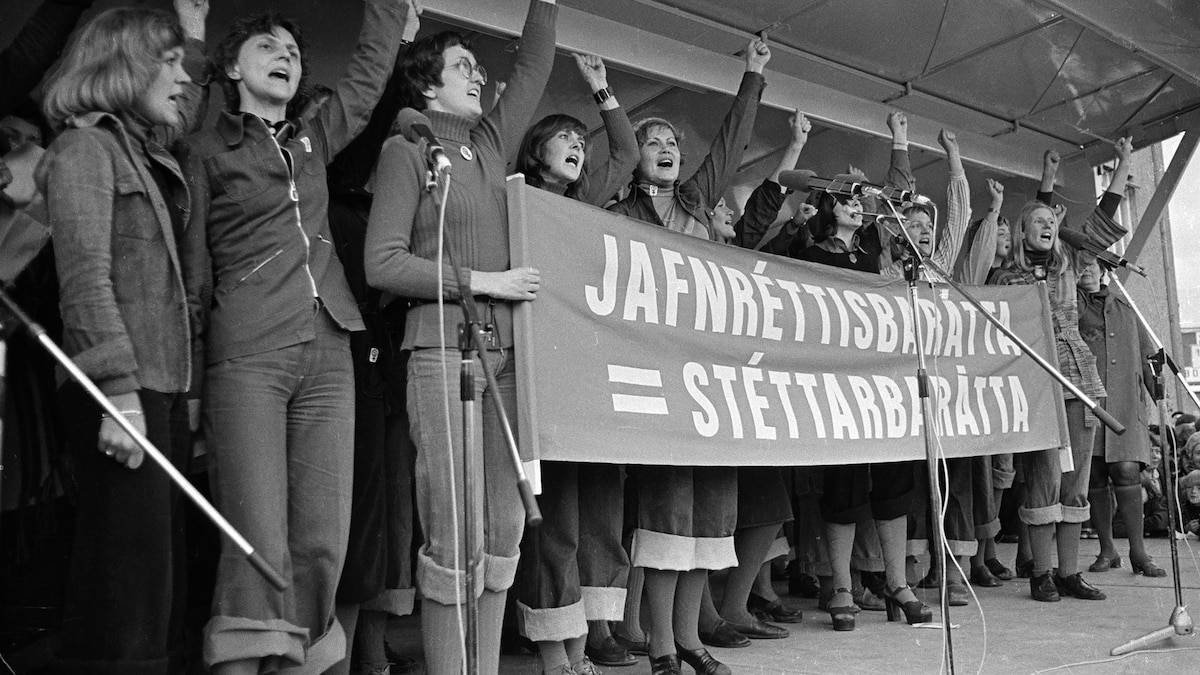Report on the 1975 Icelandic Women’s Strike: A Case Study in Advancing Sustainable Development Goals
I. Mobilization and Strategic Partnerships for Goal Achievement (SDG 17)
The 1975 Icelandic Women’s Day Off serves as a historical precedent for achieving collective action through broad-based partnerships, a core principle of Sustainable Development Goal 17. The campaign’s success was predicated on the collaborative efforts of women from all ages, backgrounds, and political affiliations.
- Communication Strategy: Organizers utilized a multi-channel approach to disseminate information, including direct mail (postcards, letters), print media (brochures, flyers, posters), and broadcast media (radio, television).
- Grassroots Engagement: Direct outreach methods such as door-to-door canvassing and phone calls were employed to ensure widespread awareness and personal connection to the cause.
- Media Partnership: Significant media interest was generated, with pre-event polls indicating an anticipated participation rate of 80 to 100 percent, amplifying the event’s reach and impact.
II. Demonstrating Economic and Social Value to Promote Gender Equality (SDG 5 & SDG 8)
The strike directly addressed the objectives of SDG 5 (Gender Equality) and SDG 8 (Decent Work and Economic Growth) by making the indispensable economic and social contributions of women visible. By ceasing both paid and unpaid labor for one day, participants highlighted systemic inequalities in labor valuation and compensation.
- National Disruption: The strike effectively brought national attention to the issue, with every major newspaper featuring the Women’s Day Off on its front page.
- Labor Solidarity: Female typesetters at the Morgunblaðið newspaper demonstrated solidarity by working after midnight to ensure the paper, which covered their own strike, was published.
- Mass Participation: The event culminated in over 20 organized rallies across Iceland, illustrating the scale of the demand for gender equality in the workplace and society.
III. Advocacy for Reduced Inequalities and Inclusive Institutions (SDG 10 & SDG 16)
The rallies and associated activities were platforms for advocating for SDG 10 (Reduced Inequalities) and SDG 16 (Peace, Justice, and Strong Institutions). The central rally in Reykjavík, attended by 25,000 women, was a powerful and peaceful demonstration demanding systemic change.
- Public Demands for Equality: Participants carried posters with clear messages such as “Equality at Once,” directly calling for the reduction of gender-based inequalities.
- Call for Political Participation: Female members of parliament, Svava Jakobsdóttir and Sigurlaug Bjarnadóttir, addressed the crowd, explicitly encouraging women to enter politics. This action promotes SDG 16’s target for ensuring responsive, inclusive, and representative decision-making at all levels.
- Cultural Advocacy: A vinyl album of feminist songs, “Áfram Stelpur” (Onward Girls), was produced, utilizing cultural expression to reinforce the movement’s goals of freedom and equality.
Analysis of Sustainable Development Goals in the Article
1. Which SDGs are addressed or connected to the issues highlighted in the article?
- SDG 5: Gender Equality – This is the primary SDG addressed in the article. The entire piece focuses on the “Women’s Day Off” in Iceland, a nationwide strike organized to protest gender inequality and demand equal rights. The event’s purpose, as highlighted by the rally posters reading “Equality at Once,” directly aligns with the overarching goal of achieving gender equality and empowering all women and girls.
2. What specific targets under those SDGs can be identified based on the article’s content?
- Target 5.5: Ensure women’s full and effective participation and equal opportunities for leadership at all levels of decision-making in political, economic and public life. The article directly connects to this target by describing how “Female members of parliament, Svava Jakobsdóttir and Sigurlaug Bjarnadóttir, spoke to the crowd, encouraging them to go into politics.” This highlights both existing female leadership and the push to increase it. The strike itself, with over 20 rallies and massive attendance, is a powerful example of women’s participation in public and political life to influence decision-making.
- Target 5.1: End all forms of discrimination against all women and girls everywhere. The fundamental reason for the strike was to protest the systemic discrimination and inequality faced by women in Iceland. The collective action of women from “all ages, backgrounds, and political parties” stopping work to demand “Equality at Once” is a direct confrontation against the discrimination they experienced in their daily lives, both professionally and socially.
3. Are there any indicators mentioned or implied in the article that can be used to measure progress towards the identified targets?
-
For Target 5.5: The article provides several quantitative and qualitative indicators that can measure women’s participation in public and political life.
- Proportion of women in political office: The article explicitly mentions “Female members of parliament,” implying that the number of women in such positions is a measurable indicator of political participation and leadership. The call to “go into politics” suggests a goal of increasing this proportion.
- Participation in public demonstrations: The article states that “Twenty-five thousand women attended” the main rally in Reykjavík. This number serves as a direct indicator of women’s active engagement in public and political discourse.
- Rate of public engagement: The organizers’ polls, which “indicated that between 80 and 100 percent of all women in Iceland were expected to participate,” serve as a powerful indicator of the level of mobilization and collective action among the female population to demand their rights.
4. Summary Table of SDGs, Targets, and Indicators
| SDGs | Targets | Indicators |
|---|---|---|
| SDG 5: Gender Equality | 5.5: Ensure women’s full and effective participation and equal opportunities for leadership at all levels of decision-making in political, economic and public life. |
|
| SDG 5: Gender Equality | 5.1: End all forms of discrimination against all women and girls everywhere. |
|
Source: nationalgeographic.com







